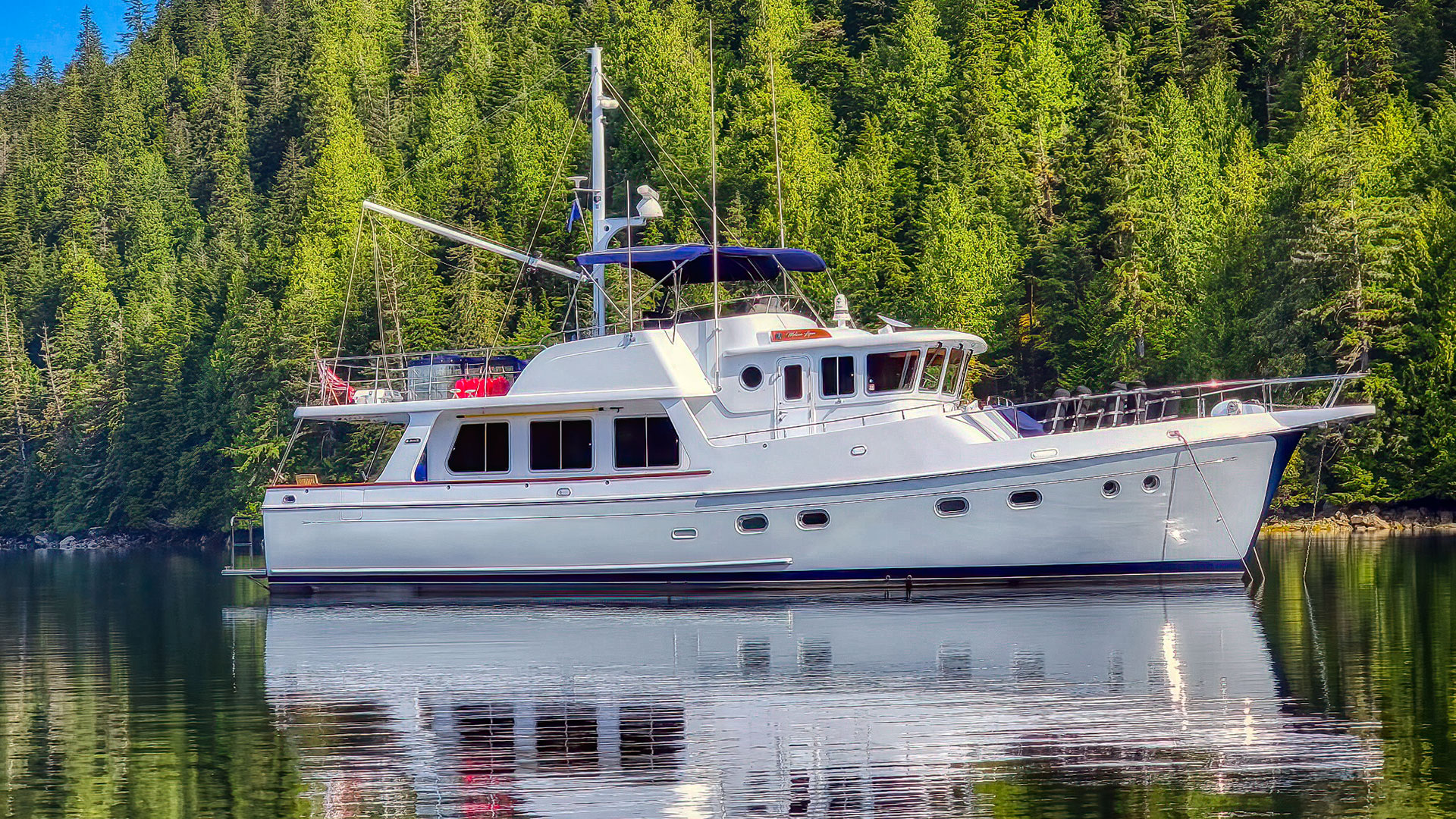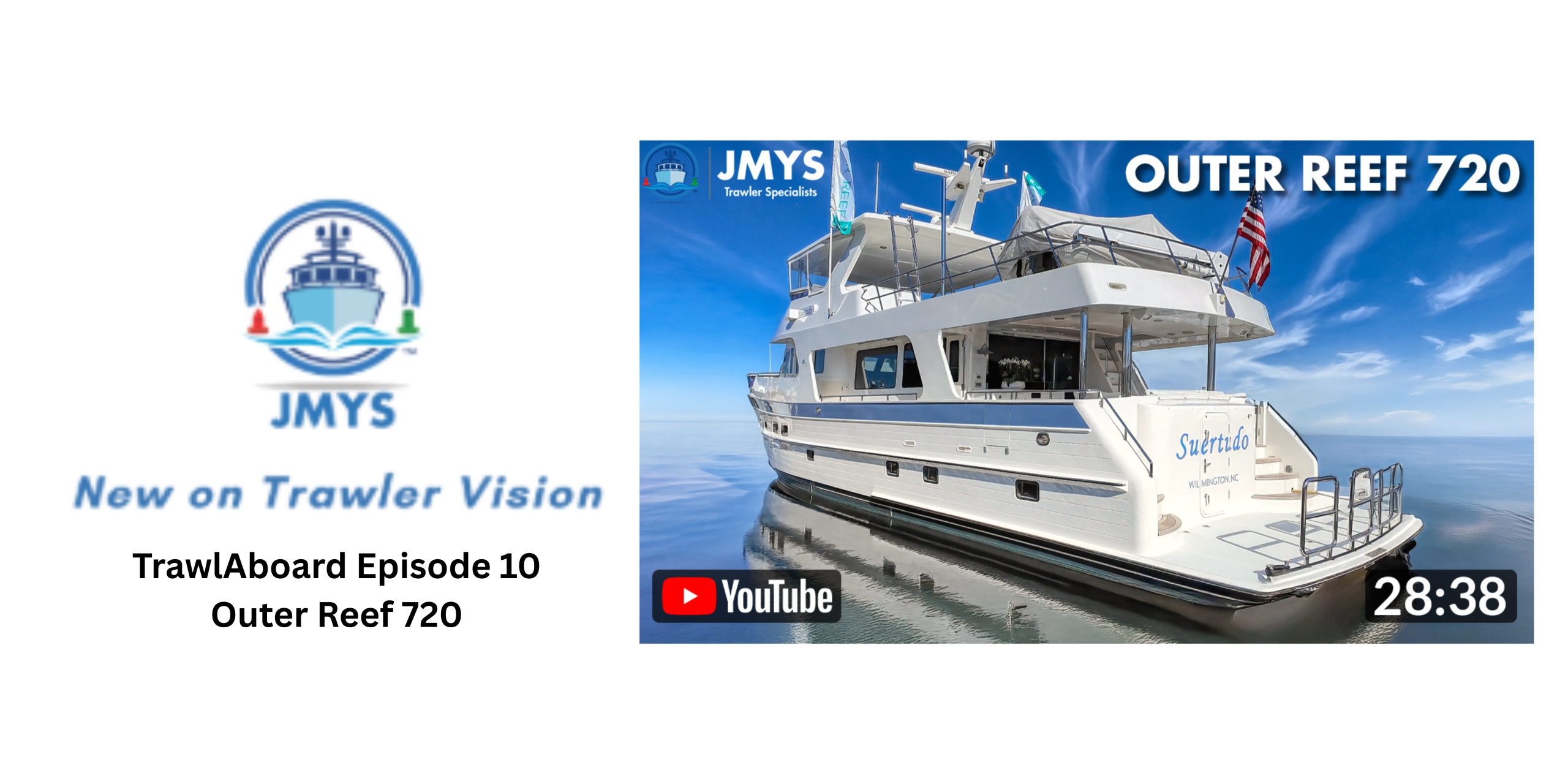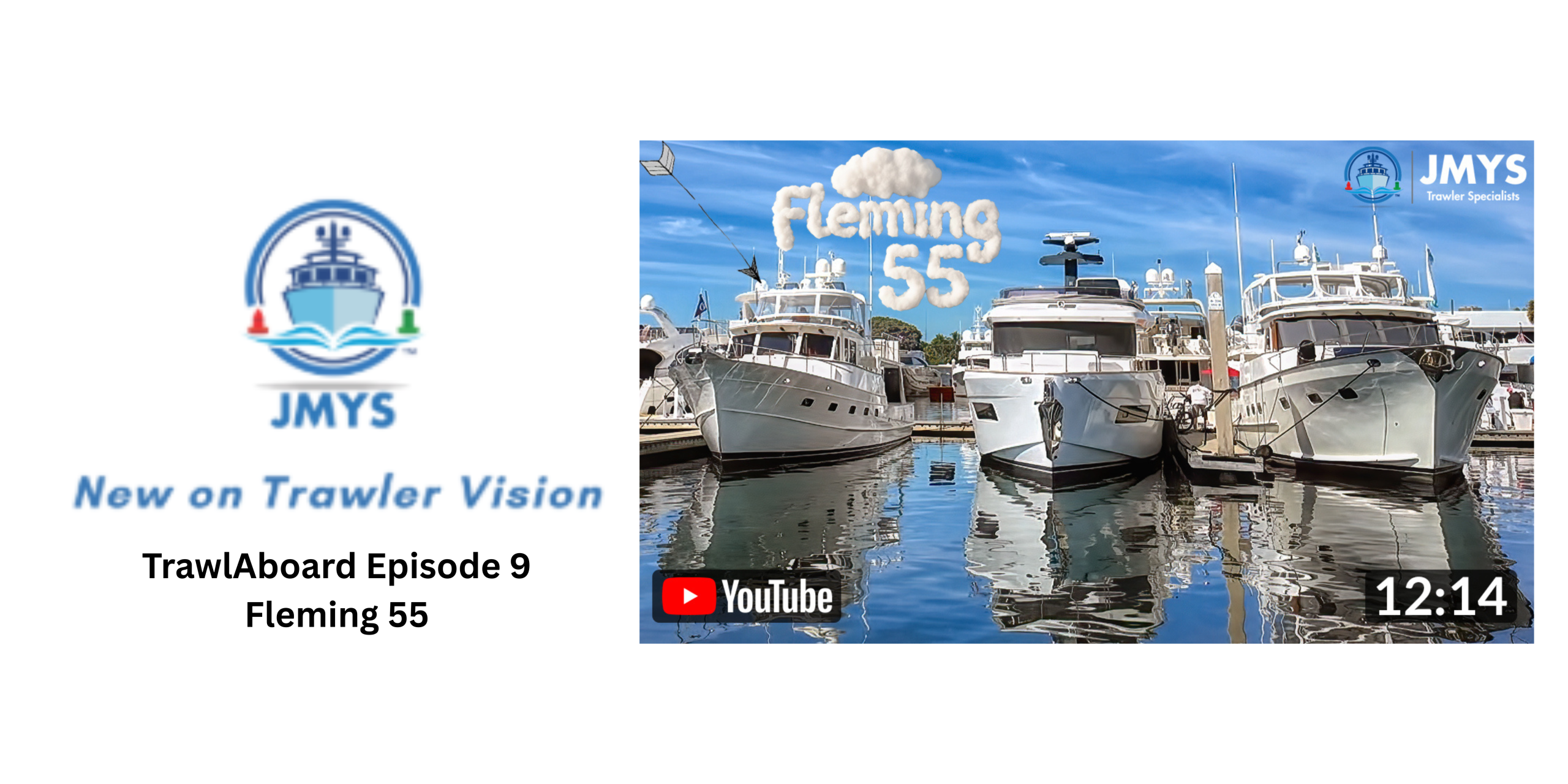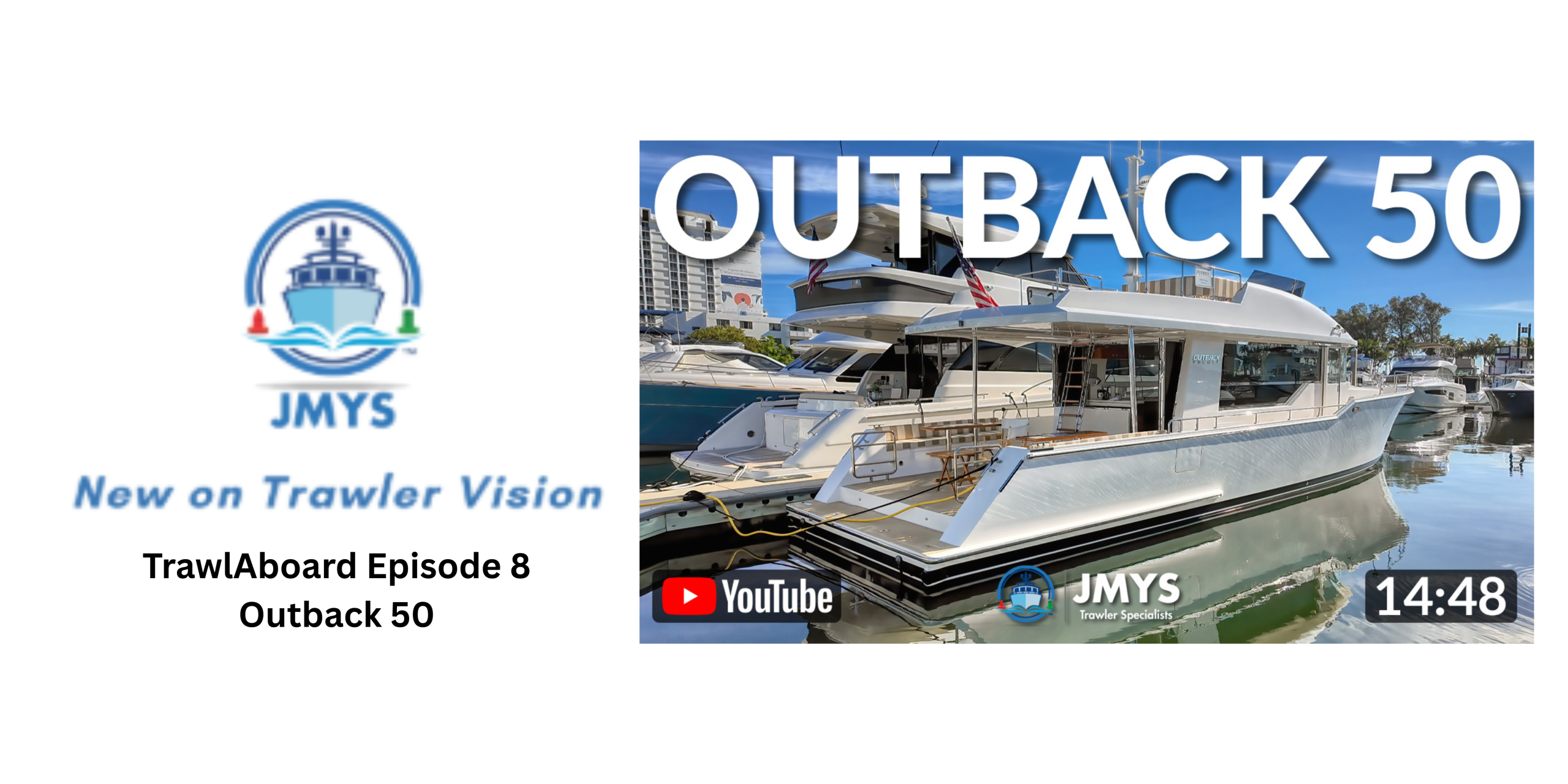Our JMYS YouTube Channel continues to attract more subscribers, and grow in popularity, thank you!
Each video has an accompanying description that is often overlooked. The description is shared to add context to the video. Hey, we get it, you want to watch, not read.
On many of our videos we open the comments section for people to say whatever they wish. When you watch one of our videos for the first time you may or may not also read the comments, but typically, once you have viewed a video you’re done and you have better things to do with your time than to watch it again.
We have a series of interviews we call #CruisingConversations where Jeff talks with various trawler personalities. One of those people who sat down with Jeff is Bill Parlatore, who, with his wife Laurene, created PassageMaker magazine. It is a fun discussion and has been posted for several months and garnered thousands of views.
Here is a link to that video: https://www.youtube.com/watch?v=ChoaEvP1ju4 or you can click on the photo below:
Recently a viewer, Ed Hoyles, had a very complimentary comment for Bill relating much of what he loves about PassageMaker magazine. The comments come to Jeff, not Bill, so Jeff replied to Ed, but also sent the thread to Bill by email so Bill would know what was going on. Bill wrote the following response which we posted in the comments section and wanted to share with our JMYS.com readers as well.
Here is the YouTube comment thread:
Ed Hoyles on September 18th.
Your idea of story continuity was a trend setter that was way ahead of the times. I always liked that you did not follow the norm of making the reader “Continued on page” and be exposed to advertisements just to finish the article. Brave concept, yet you made the mag successful because of it
JMYS – Trawler Specialists on September 18th
Hi Ed, I will share this with Bill and agree with your points. The Parlatore’s produced the magazine they wanted to read, they did it their way, not the way it was “supposed” to be done. Those early years are treasured volumes in my collection and have been thumbed through more than once. I guess I treat them like books, they are resources I cherish, not a thin collection of glossy pages that show up via mail to be skimmed and tossed. The length of the stories, the detail, etc. issue after issue, year in and year out. Still enjoy the publication and events, they identified a great market that was just starting to awaken and is still booming.
Here is what Bill Parlatore had to say via email:
Hi Jeff,
I would love to elaborate more details about the magazine and what was behind it.
There are several other points, some a bit subtle, but they added to the enjoyment of all who read the magazine, both reader and advertiser.
Laurene and I were not from publishing, so we started with a blank piece of paper, unhindered by the traditional publishing style whose ways of doing things were obsolete.
As Laurene worked on the business plan, we sat down at the dining room table and brainstormed everything we disliked about traditional magazines, not just boating magazines.
From this discussion came the commandment to never split apart a story, for the obvious reasons you mentioned. It was a difficult thing to pull off when creating the layout imposition for each issue. But we never wavered, and the readers appreciated the extra effort to make it happen.
We also used a larger font size, knowing that our readers were older.
We followed the Chicago Book of Style, rather than the AP style all journalists are trained on. The AP style aims for using the least amount of type whenever possible, as it stems from a time long ago in publishing when a typesetter manually set the type by hand, letter by letter, so using less type saved time and ink. We went the other direction and spelled out state names and other normally abbreviated words if it made reading easier and less work for the readers’ brains to untangle the abbreviations.
This is why I rarely used professional journalists, who have been trained to do just the opposite. Bob Lane was a trained newspaper journalist, but he came around to my way of thinking.
I made all contributors follow one mantra: The story determines its length. During the years it made me crazy when writers, especially if they once worked for a newspaper, would chop up press releases to fit a hole, most always leaving out useful information. I made sure we provided the whole story, news item, or announcement. And since the people at boat and equipment companies who put together these press releases are not really thinking about it from all angles, we would often call the companies and builders to ask more questions. So what does this mean to the trawler owner? How is this better than what you had before? Are there other side benefits to the new gear?
In one huge area, we stood separate from every other publisher. To the other magazines, the only customer is the advertiser, never the reader. That is why they give magazines out for free or almost free. It bumps up the circulation so they can charge the advertisers such high prices. And why the stories are short, incomplete, and lacking in detail.
At PMM, the readers were every bit as important as the advertisers, which accounted for our longer articles that really told the full story.
Other boating publications purposely never say anything negative about a product or boat, which I believe is a great disservice to both advertiser and reader. I once wrote about how the settee in a certain trawler was too short for sleeping, as off watch crew would be driven out of the forward accommodations going into head seas and have nowhere to sleep. The builder told me had never thought about that, the Taiwan workers at the yard were short, so it went unnoticed. By simply following my suggestion to shorten the width of an end table to allow for a longer settee, the issue was resolved.
I can give many other examples of how our honest articles improved the boats and equipment through the years to the point that several builders sat us down when they designed a new boat to get our experienced take on their ideas beforehand. Remember, most boat builders don’t spend much time on their boats, and certainly not on any other builders’ boats. So they often don’t realize there may be better ways of doing something.
Hope this helps fill out the story, Jeff. Have a great day!
Bill
Sent from my iPad
Thank you Ed, thank you Bill and a big thank you to everyone who has watched the video.





